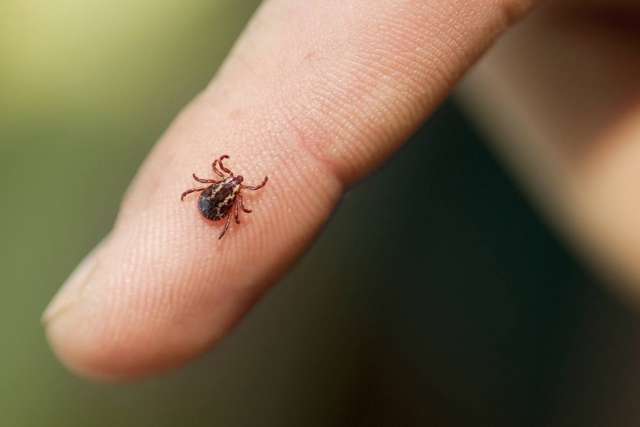Dear Doctors: We live in Wisconsin, and this year we’re seeing a lot of news about ticks carrying Lyme disease and a few other kinds I hadn’t heard of before. They don’t fly around like mosquitoes, so why is it so easy for them to bite you? Are there bug sprays that are good against ticks?
Dear Reader: Ticks are tiny parasites whose bite can infect their hosts with disease-causing microbes -- bacteria, viruses or one-celled organisms known as protozoans -- that they pick up when feeding on an infected host. Here in the United States, Lyme disease is the most common tick-borne illness. It is spread by the bite of black-legged ticks infected with a bacterium known as Borrelia burgdorferi. The Centers for Disease Control and Prevention estimates that more than 475,000 people are diagnosed and treated for Lyme disease each year.
Other tick-borne illnesses include alpha-gal syndrome, anaplasmosis, Rocky Mountain spotted fever, babesiosis and ehrlichiosis. Health data show that cases of tularemia and Powassan virus, while still somewhat rare, are also on the rise.
Ticks require a blood meal to progress through each stage of growth and to lay eggs. They perch on vegetation and wait for a warm-blooded mammal -- animal or human -- to brush by. When sensory cues, such as vibration, body heat or exhaled carbon dioxide, alert the tick to the presence of a potential host, it grabs on and climbs aboard. It then seeks a sheltered spot with bare skin and begins to feed. As the tick siphons blood from the host, it injects its own saliva into the host. This is when the tick can transmit any pathogens it is carrying.
There are several steps you can take to reduce your risk of a tick bite. When spending time in tick habitat, keep your skin covered as much as possible. Wear long sleeves, tuck in your shirt, tuck pant cuffs into socks, wear a hat and cover your neck. Light-colored clothing makes ticks easier to spot.
DEET and picaridin are synthetic chemicals effective at repelling ticks. You can also tick-proof your clothing by treating it with an insecticide called permethrin, which incapacitates ticks by disrupting their nervous system. Permethrin should be used on clothing only and never applied directly on your body, as it can cause skin irritation. Permethrin has multiple uses and comes in varying concentrations -- be sure to purchase the form intended for clothing and follow directions carefully. You can also purchase clothing already treated with permethrin.
It’s important to note that cats are sensitive to this insecticide and even low concentrations can cause health problems.
Always check your body for ticks when returning from time in their habitat. They like moist, dark places, including the waist, groin, scalp, navel and armpits. Check your clothing, including your shoes and your gear. If a pet joined you, a visual check and a thorough brushing can help protect them as well.
(Send your questions to [email protected], or write: Ask the Doctors, c/o UCLA Health Sciences Media Relations, 10960 Wilshire Blvd., Suite 1955, Los Angeles, CA, 90024. Owing to the volume of mail, personal replies cannot be provided.)





